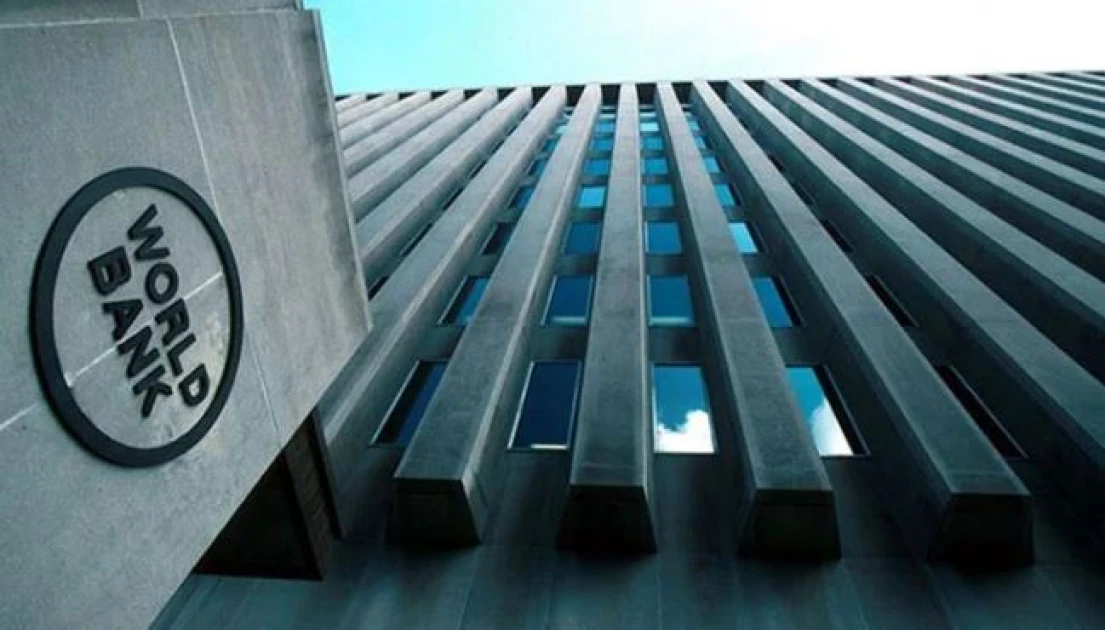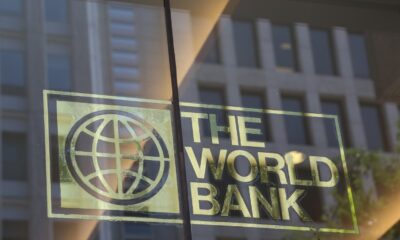Business
World Bank Issues Stark Warning on Kenya’s Debt Crisis While Proposing Tax Overhaul
A worker earning Ksh 1 million monthly would see their take-home pay reduced by Ksh 12,123 to Ksh 646,805, while someone earning Ksh 800,000 would face a reduction of Ksh 7,325.

Multilateral lender calls for structural reforms beyond austerity measures as government faces mounting fiscal pressures
The World Bank has delivered a sobering assessment of Kenya’s fiscal position, warning that the country faces a “high risk of default” while simultaneously proposing a radical restructuring of the income tax system that would see top earners pay significantly more.
In a stark warning delivered this week, World Bank Division Director for Kenya Qimiao Fan cautioned that Kenya’s debt levels have reached concerning heights, with austerity measures alone proving insufficient to address the country’s mounting fiscal challenges.
“Default will not be an easy solution for Kenya,” Fan warned, citing research showing that sovereign defaults typically reduce GDP per capita by 8.5% and increase poverty rates by 6% within five years. “We have seen that default is not an effective solution for anyone.”
Treasury Cabinet Secretary John Mbadi has outlined what he termed “aggressive fiscal consolidation measures” to prevent default, including Ksh 120 billion in expenditure cuts for the 2025/26 financial year.
The government aims to reduce the fiscal deficit below 5.3% in 2025, with the next financial year projecting Ksh 559 billion in non-tax revenue against a total deficit of Ksh 877 billion.
“We were bold as a government. We took the decision to be radical in terms of projecting our fiscal deficit and in terms of projecting our revenues, which we feel have been exaggerated over the years,” Mbadi stated, acknowledging the Treasury had to cut the budget by Ksh 120 billion.
The deficit will be financed through a combination of domestic borrowing (Ksh 592 billion) and external borrowing (Ksh 284 billion).
World Bank proposes tax system overhaul
However, the World Bank argues that fiscal consolidation must be accompanied by structural reforms, including a comprehensive overhaul of Kenya’s personal income tax system.
The institution is proposing the creation of a new six-tier tax structure that would shift the burden toward high earners while providing relief to lower and middle-income workers.
Under the proposed system, Kenyans earning above Ksh 800,000 monthly would face a top tax rate of 38% – up from the current 35%.
This represents a significant increase for the country’s highest earners, though the move would impact fewer than 10% of formal sector employees.
The restructuring would benefit lower-income earners significantly.
Workers earning between Ksh 24,000 and Ksh 32,333 would see their tax rate drop to 15% from 25%, while those earning between Ksh 32,334 and Ksh 166,667 would pay 25% instead of the current 30%.
Relief for struggling workers
The proposal comes as Kenyan workers endure their fifth consecutive year of declining real wages.
Average monthly real pay has fallen from Ksh 62,256 in 2020 to Ksh 55,451 last year – an erosion of Ksh 6,805 in purchasing power.
Workers’ disposable income has been further squeezed by additional levies including the 1.5% housing tax and the 2.75% social health insurance levy, leaving many with take-home pay below the legally required one-third of their gross salary.
“What we find is that there is a distortion in the labour market, especially for the low-income earners where the tax band is relatively high compared to higher-income earners,” explained Marek Hanusch, Lead Economist at the World Bank in Kenya.
“When you adjust the overall income tax in a way that becomes progressive, you would increase the incentive to formalise.”
The proposed changes would have varying effects across income levels.
A worker earning Ksh 1 million monthly would see their take-home pay reduced by Ksh 12,123 to Ksh 646,805, while someone earning Ksh 800,000 would face a reduction of Ksh 7,325.
Conversely, lower-income earners would benefit substantially. A worker earning Ksh 50,000 would see their take-home pay increase by Ksh 179 to Ksh 39,208, while those earning Ksh 100,000 would gain Ksh 3,788.
Structural reforms required
World Bank economist Jorge Tudela Pye emphasized that fiscal measures alone would not solve Kenya’s problems.
“Austerity measures alone might not be enough to get Kenya out of its fiscal hurdles. Structural and governance reforms are also needed,” he noted.
The warning comes at a critical time as the Treasury prepares to present its budget in the coming weeks, facing the challenge of balancing fiscal responsibility with the need to support economic growth and employment creation in an increasingly challenging environment.
Kenya’s tax wedge – the difference between pre-tax and post-tax pay – currently stands at 19%, more than double that of countries like Austria, the Netherlands, and Belgium.
This high tax burden on lower-income earners is seen as discouraging formalization of the economy.
The World Bank maintains that its proposed tax restructuring would be revenue-neutral, with reduced taxes on lower earners offset by increased levies on the wealthy.
However, the success of such measures will depend on broader structural reforms to address the underlying challenges facing Kenya’s economy.
As the government grapples with mounting debt pressures and the World Bank’s stark warnings, the proposed tax reforms represent both an opportunity to create a more equitable system and a test of political will to implement potentially unpopular measures affecting the country’s highest earners.
Kenya Insights allows guest blogging, if you want to be published on Kenya’s most authoritative and accurate blog, have an expose, news TIPS, story angles, human interest stories, drop us an email on [email protected] or via Telegram
-

 Business1 week ago
Business1 week ago‘They’re Criminals,’ Popular Radio Presenter Rapcha The Sayantist Accuses Electric Bike Firm Spiro of Fraudulent Practices
-

 News2 weeks ago
News2 weeks agoTemporary Reprieve As Mohamed Jaffer Wins Mombasa Land Compensation Despite Losing LPG Monopoly and Bitter Fallout With Johos
-

 Business4 days ago
Business4 days agoIt’s a Carbon Trading Firm: What Kenyans Need to Know About Spiro’s Business Model Amid Damning Allegations of Predatory Lending
-

 Business3 days ago
Business3 days agoManager Flees Safaricom-Linked Sacco As Fears Of Investors Losing Savings Becomes Imminent
-

 Investigations2 weeks ago
Investigations2 weeks agoFrom Daily Bribes to Billions Frozen: The Jambopay Empire Crumbles as CEO Danson Muchemi’s Scandal-Plagued Past Catches Up
-

 Sports1 week ago
Sports1 week ago1Win Games 2025: Ultimate Overview of Popular Casino, Sports & Live Games
-

 Investigations1 week ago
Investigations1 week agoDisgraced Kuscco Boss Arnold Munene Moves To Gag Media After Expose Linking Him To Alleged Sh1.7 Billion Fraud
-

 Business2 weeks ago
Business2 weeks agoHass Petroleum Empire Faces Collapse as Court Greenlights KSh 1.2 Billion Property Auction
























